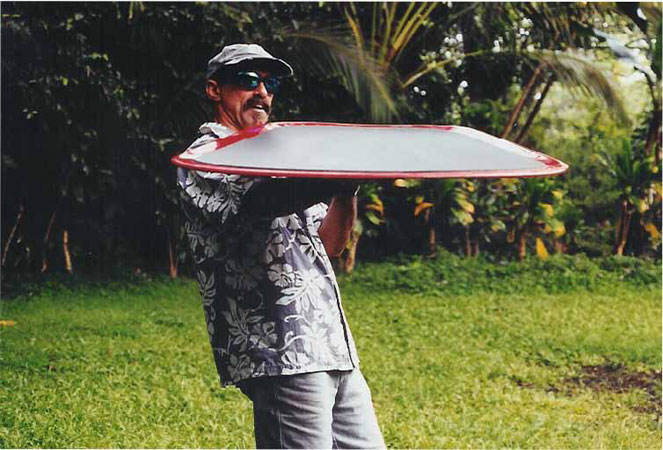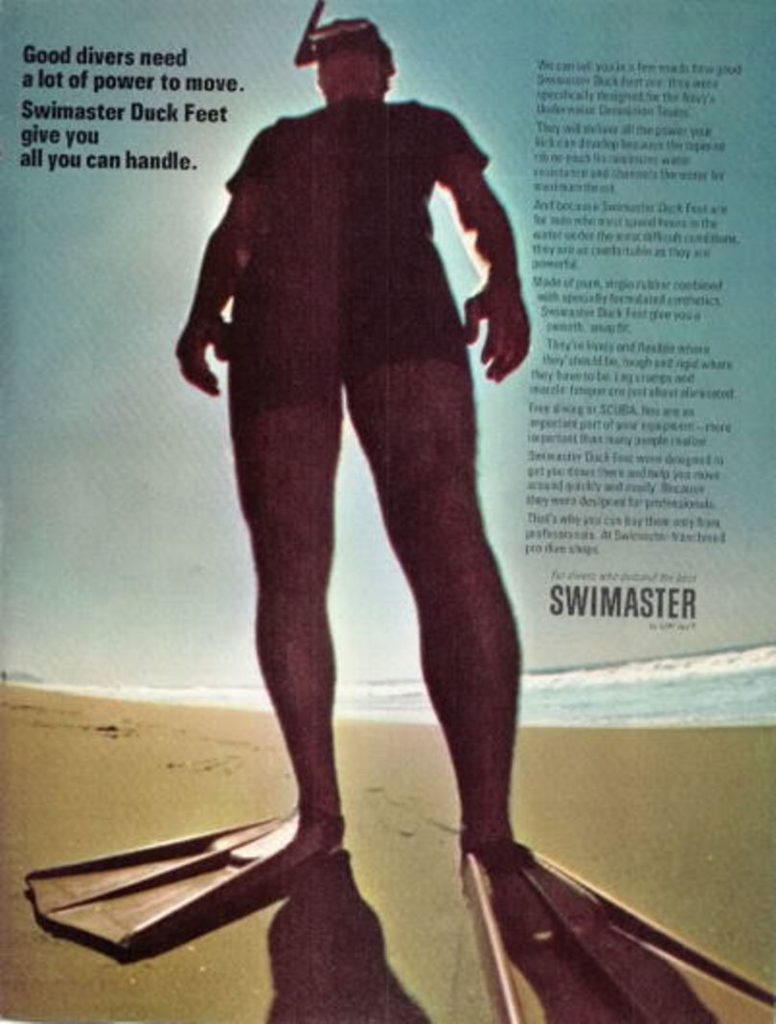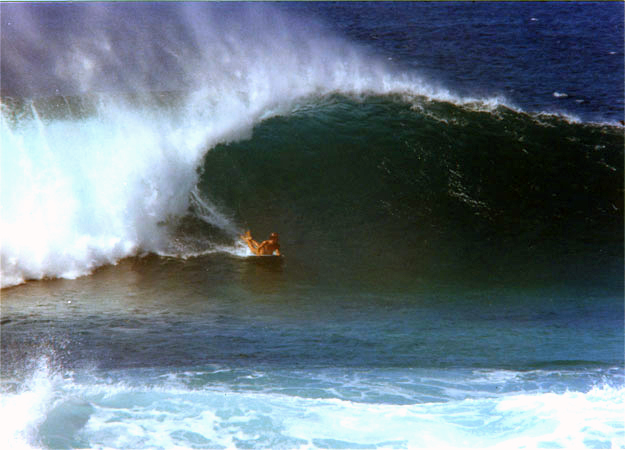What’s the difference between a paipo and a boogieboard?
We get quite a few questions asking how our Paipos compare with the modern day boogie boards. Truth be told, there isn’t much comparison. But if that were all to the story, then there wouldn’t be much reason to keep writing! While paipos and boogie boards both share a common ancestor, they differ drastically in construction methods, maneuverability, and actual use. Hopefully this article will answer your questions and help you transition from your sponge to a rigid paipo.

Paul showing off the thickness of the solid fiberglass construction.
HPD Paipos don’t float like boogieboards
Unlike foam-core bodyboards and boogie boards, HPD Paipos are rigid in construction. Made from solid fiberglass, HPD Paipos do not retain any air within the fiberglass material. Instead, we rely on the relative density of our boards to allow our paipos to rise to the top of the water column when released under water. This is a primary principle of HPD Paipos that makes our boards super durable.
Paipos use hydrodynamic properties to push the board to the surface and stay “afloat” while under speed. Much like an airplane uses air to stay flying, an HPD Paipo is curved in such a way to force water underneath the board, pushing the board upward. When water is no longer flowing over the board (like after a wipeout), the board is no longer able so surf, so it will stop not far away from the wipeout, and slowly rise to the surface. This is why many old timers never went out with leashes, as their boards usually weren’t far away.
On the other hand, boogie boards rely on encapsulated foam to retain air within the structure. This of course makes paddling very easy, and launching on waves a no-brainer, but it is very difficult to duck-dive under sets. And forget about riding one without a leash.

Paipo XL bottom turn at Pipeline.
HPD Paipos are durable
Thanks to their solid fiberglass construction, HPD Paipos last pretty much forever. Back in the 90’s Paul would drive his truck over the boards in the parking lot, and take videos slamming the boards into a coconut tree. We’ll try and dig these up and post them, but be warned they are definitely cringe-worthy!
HPD Paipos are FAST!
Like we mentioned before, HPD’s rigid fiberglass construction allows our Paipos to maintain shape under high-speed and stress. Foam boogieboards “squish” down when under stress, or under a heavy rider. This can deform the boogieboard and slows it way down in the water.

A Swimaster Duck Feet ad thought to be from the 1970s, showing the Voit/Swimaster UDT Duck Feet fins that were popular among paipo riders.
Wear Fins!
You might not need fins with a boogieboard on the small stuff, but everybody knows having powerful fins is a must when bodyboarding on large wave. Good fins provide thrust to help catch surf, and make swimming in strong current possible. Without fins, it will be an exhausting and frustrating day.
We used to use the UDT Duck Feet fins back in the day, and I still own a pair today. They are stiffer than normal fins, and really long to provide lots of thrust. Just google VOIT UDT Duck Feet and you’ll be able to find them for a decent price online.
Taking Off
Catching a wave on a paipo is not the same as a boogieboard. Since flotation is minimal, the secret to catching waves on a Paipo is to push the board out infront of you, and make yourself as long as possible.
This is where nice, powerful fins come in handy. When the board is way out in front of you, start kicking and build up speed.
Once you feel the wave start to pick you up, pull the board in towards your chest and you will feel the speed pick up. This is very counter-intuitive coming from a boogieboard background, where flotation assists in catching waves. Getting the hang of this process might take a few tries, but once you figure it out, it becomes second nature, and catching waves gets easy.
Still Have Questions?
We love talking to our riders and helping them get used to our bodyboards. If you have any questions, just give us a call. We’re here to help!

I bodyboard, make my own the past 10 years. I have made several boards, usually a foam core, shaped like a surfboard, 4 ft long with a 4 inch rocker in front and usually quad fins. Some I’ve fiberglassed like a surfboard and some I’ve made like a soft top surfboard. Can’t use fins anymore, see below, is why the longboard for better float, speed paddling, etc.
I basically use what you suggest is a paipo technique while surfing. In big waves and in air drops I also push the board way out ahead. The technique eliminates what surfers call “perling”, or digging the nose in and wiping out. Once i’ve reached the bottom, I pull the board in and start the bottom turn. It’s only a technique necessary when dropping straight down the wave. Not necessary in small or when I’m already in the wave moving parallel to it.
The most dangerous board I surfed was a solid, balsa wood bodyboard a friend made for me in Ecuador. In my ignorance I used a leash and tore up both rotator cuffs when the leash was in front like a bodyboard, and destroyed both knees when I switched the leash to my ankle like a surfboard. I now have replacement knees. I’m 76 and usually surf everyday. Cheers, mate.
Love the article. Was my first time on your site.
Jimmy
Aloha Jimmy! That’s why I’ve never had a Paipo with a leash. I’ve borrowed a few boogie boards over the years tho and I cannot stand being leashed on to something that floats so much. Sounds like you were really charging the big waves though! Mahalos for the stories. Be safe and stay salty!